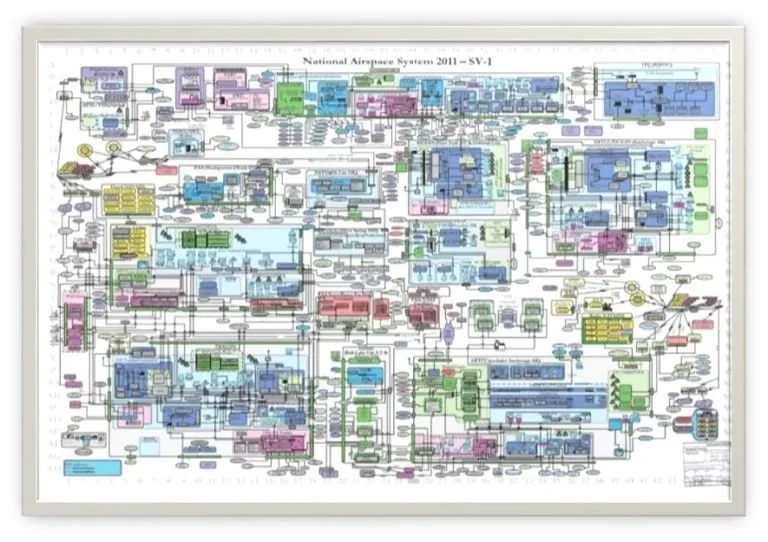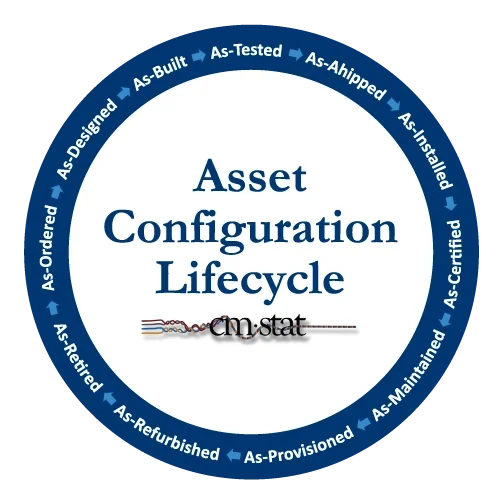Hardware Configuration Management Software for the Aerospace & Defense Supply & Service Chain
Part 1 of 3 — Finding Simplicity in Complexity
In this first article of a multi-part series on hardware configuration management software tools for the aerospace and defense industry we begin by summarizing the trends which have added so much complexity that can paralyze even the best defense contractors and their programs. We will probe if enterprise PLM helps to simplify the CM function or just add more complexity and cost. Finally, we’ll share what CMstat has learned that A&D supply and service chain partners value the most to make the complex as simple as possible; especially when it comes to configuration management tools used downstream of product engineering to manage the as-delivered and as-maintained real world configurations of in-service equipment and long-life assets deployed in the field.
It’s no secret that A&D OEMs and their contract-chain partners feel like they are being crushed by an avalanche of complexity along nearly every axis of their business. The unrelenting complexity of ever-increasing customer requirements, product performance expectations, new technology absorption, system integrations, and lengthening product development and use lifecycles is overwhelming. Then added on top of this is a constantly vacillating layer of organizational complexity in program management, contract funding, business processes, and supply chain partnerships that increasingly have design authority, not just build-to-order responsibility.
Example of Modern Aerospace Systems Complexity
Finally, to help manage all of this intricacy we have added yet another layer of complexity from the IT system architectures, software, implementations, and integrations of digital applications, many which ironically were created to save ourselves from the quagmire of complexity. In doing so it seems we have now created a whole new parallel digital world where every element and process must be modelled in exacting detail with all things instantly connected.
Despite all the value of digital technologies to A&D product development and system performance, it has indisputably injected more complexity and cost for the program office who must now manage both physical and digital versions of processes and products. The evidence speaks for itself in the number of new weapons programs which run over budget, are late, or miss performance goals – or suffer from all three ailments – even after massive spending on digital automation, integration, and harmonization.
A prominent example of the complexity pandemic is the expectation of recent years that an all-encompassing monolithic enterprise-wide PLM solution, delivered by a single omnipotent provider touting a single version of the truth, was capable of managing, if not distilling out, much of the complexity of the modern A&D enterprise. More than a few executives after spending millions of dollars on PLM initiatives now realize that was an unrealistic vision of wishful thinking.
While enterprise PLM can indeed improve upon many important functions critical to the A&D industry, most PLM systems were initially acquired to start out as a more simple PDM solution. They were often sold as a means for getting control of all the many different BOMs used across the aerospace manufacturer, then providing for change control and configuration management over the design-to-build part of the lifecycle. Unfortunately, by the time CAD data management, application integration, document management, BOM variant management, collaboration, visualization, digital manufacturing, workflow management, simulation data management, supply chain integration, requirements planning, project planning, cost management and more functions were added onto the PLM skeleton it is no surprise that many implementations collapsed under their own weight.
The Long Tail of Configuration Management User
As a consequence, more than a few PLM projects became a scaled back “PLM minus” dream instead of a more realistic “PDM plus” plan.
The first victims of a delayed or failed PLM strategy are often configuration management professionals working outside of engineering design who are responsible for creating, checking, distributing, maintaining, and enriching product configuration data for others further downstream to consume. There are typically far more users of configuration management tools and consumers of product configuration data in these down-cycle functions than those found in product engineering. These data users include those in logistics, test, quality assurance, tech pubs, service, and of course the partner supply chain. Without instant access to “live” configuration data of the as-built or in-service product they often resort to elaborate spreadsheets and homegrown legacy tools that only the resident BOM guru or CM master fully understood.
Nowhere is the live as-maintained configuration data more important than in the supply and service chains of A&D OEMs who manufacture hardware components or perform maintenance, repair or refurbishment of in-service assets and equipment located in the field. These contractors often do not need or want, nor can they afford, enterprise-level PLM. Neither do they want to be dependent on or held hostage by their OEM customer’s PLM strategy and favored software of the moment.
The Long Tail of Configuration Management Users
An inconvenient truth that some enterprise PLM advocates don’t want customers to understand is that the in-service hardware configuration management software needs of the A&D supply and service partner chain can be relatively simple to meet and fast to implement. That is especially true for those users who are managing the configuration of the already-built as-delivered, as-maintained, as-repaired, as-refurbished, or even as-retired product, equipment, or system. These CM users are often far removed from the original design-centric PDM software and data vault and don’t want the burden of complexity that comes from enterprise-class PLM solutions.
If not enterprise PLM, then what do these configuration management software users want? From over two decades of working in this space CMstat has found what A&D program contractors desire has not changed that much, but it has become even more important. The top ten characteristics that contractors seek out and value from a configuration management tool are:
Capable and efficient in production use, offering the deep configuration management functionality required to support the five tenets of CM: configuration planning, configuration identification, change control, status accounting, and traceability and audits.
Intuitive and easily mastered in everyday use by the CM expert who creates data as well as in occasional use by program managers and others who consume or repurpose data.
Deployable quickly and rolled out with minimal demand on IT resources, no programming and little site customization required.
Compact and right-sized for contractors who must often acquire several solutions to support all their different customers and program contracts.
Affordable and maintainable with a low initial cost followed by a low total lifecycle cost of ownership.
Nimble and malleable to accommodate unforeseen new requirements, uses, projects, workflows, and digital connections.
Durable and resilient over the life of long programs and product use, regardless of the original design requirements or the initial contract stipulations.
Portable and adaptable across different program contracts that may be at different stages of maturity and deployment.
Scalable and robust to accommodate the elastic business cycles of growth and contraction as requirements change throughout the partner chain.
Secure and safe in both standalone and connected modes of operation.
In our next CMsights post in this series we will examine how these user preferences for hardware configuration management tools translate into functional requirements for software that is highly capable, rapidly deployable, instantly usable, and quickly affordable. And in doing so help A&D contractors to find simplicity in the hyper-complex world of A&D programs.
To follow this discussion subscribe to CMsights by filling out the Subscribe form at the top of the right channel of this page.
Receive CMsights
Subscribe to CMsights News for the latest updates from CMstat on Configuration Management, Data Management, EPOCH CM, and EPOCH DM.
Request a Demo
See how EPOCH CM and EPOCH DM support industry standards and best practices in Configuration Management and Data Management.



